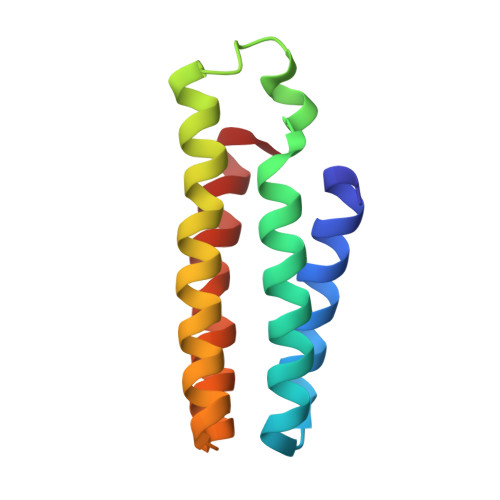Controlled protein dimerization through hybrid coordination motifs.
Radford, R.J., Nguyen, P.C., Ditri, T.B., Figueroa, J.S., Tezcan, F.A.(2010) Inorg Chem 49: 4362-4369
- PubMed: 20377257
- DOI: https://doi.org/10.1021/ic100534y
- Primary Citation of Related Structures:
3L1M - PubMed Abstract:
Protein homodimerization is the simplest form of oligomerization that is frequently utilized for the construction of functional biological assemblies and the regulation of cellular pathways. Despite its simplicity, dimerization still poses an enormous challenge for protein engineering and chemical manipulation, owing to the large molecular surfaces involved in this process. We report here the construction of a hybrid coordination motif--consisting of a natural (His) and a non-natural ligand (quinolate)--on the alpha-helical surface of cytochrome cb(562), which (a) simultaneously binds divalent metals with high affinity, (b) leads to a metal-induced increase in global protein stability, and importantly, (c) enables the formation of a discrete protein dimer, whose shape is dictated by the inner-sphere metal coordination geometry and closely approximates that of the DNA-binding domains of bZIP family transcription factors.
- Department of Chemistry and Biochemistry, University of California, San Diego, 9500 Gilman Ave, La Jolla, California 92093-0356, USA.
Organizational Affiliation:



















